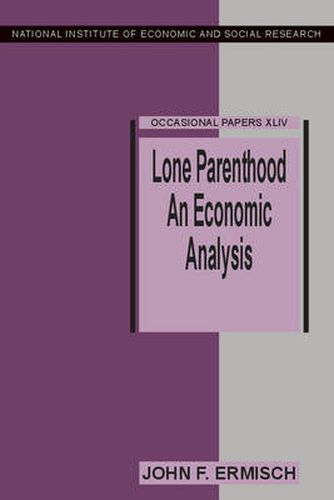Readings Newsletter
Become a Readings Member to make your shopping experience even easier.
Sign in or sign up for free!
You’re not far away from qualifying for FREE standard shipping within Australia
You’ve qualified for FREE standard shipping within Australia
The cart is loading…






In 1989, one-parent families comprised seventeen percent of all families with dependent children, and their number has almost doubled in the past two decades. Almost all the information we have hitherto had about them comes from ‘snapshots’ in cross-section surveys. This book analyzes for the first time the flows into and out of lone parenthood, using demographic and employment histories from a British national survey carried out in 1980. It studies how various socio-economic characteristics of women and their economic environment, such as welfare benefits, affect these flows, and how these interact to determine the attributes of the population of one-parent families, particularly their economic circumstances. The book also studies the lone parents’ movements into and out of paid employment, and the effect of welfare benefits on their employment. The analyses are used to gauge the effects of alternative policies on one-parent families, their paid employment, and their living standards.
$9.00 standard shipping within Australia
FREE standard shipping within Australia for orders over $100.00
Express & International shipping calculated at checkout
In 1989, one-parent families comprised seventeen percent of all families with dependent children, and their number has almost doubled in the past two decades. Almost all the information we have hitherto had about them comes from ‘snapshots’ in cross-section surveys. This book analyzes for the first time the flows into and out of lone parenthood, using demographic and employment histories from a British national survey carried out in 1980. It studies how various socio-economic characteristics of women and their economic environment, such as welfare benefits, affect these flows, and how these interact to determine the attributes of the population of one-parent families, particularly their economic circumstances. The book also studies the lone parents’ movements into and out of paid employment, and the effect of welfare benefits on their employment. The analyses are used to gauge the effects of alternative policies on one-parent families, their paid employment, and their living standards.